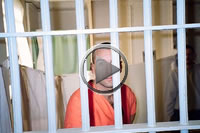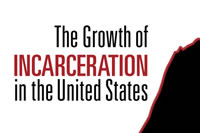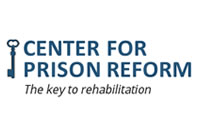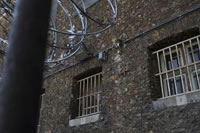 Alexander Reynolds’ new book, Convict Land: Undercover in America’s Jails details his experiences as an “undercover inmate” in the United States penal system. Looking to find the truths behind the myths of incarceration, he set out to learn about how prisoners are kept and experience the conditions in which they live. In this video interview from Lip News, Reynolds talks about rehabilitation, education, reform in jails, and more. What did he find behind bars?
Alexander Reynolds’ new book, Convict Land: Undercover in America’s Jails details his experiences as an “undercover inmate” in the United States penal system. Looking to find the truths behind the myths of incarceration, he set out to learn about how prisoners are kept and experience the conditions in which they live. In this video interview from Lip News, Reynolds talks about rehabilitation, education, reform in jails, and more. What did he find behind bars?
Learn about one man’s experiences in ‘Convict Land’ at youtube.com![]()

 The Second Chance Act was designed to improve outcomes for people returning to communities after incarceration, the first bill of this nature to be passed into law. Currently there are identical bills in the
The Second Chance Act was designed to improve outcomes for people returning to communities after incarceration, the first bill of this nature to be passed into law. Currently there are identical bills in the  There are two aspects of the American prison system that stand out to David Skarbek: the massive size of the inmate population, and the inner workings of prison gangs. In his new book, The Social Order of the Underworld: How Prison Gangs Govern the American Penal System, he examined the role prison gangs play in facilities around the country. What he found may seem shocking – prison gangs can be ‘sophisticated organisations’ that help uphold the rules inside prisons, often to the benefit of many prisoners.
There are two aspects of the American prison system that stand out to David Skarbek: the massive size of the inmate population, and the inner workings of prison gangs. In his new book, The Social Order of the Underworld: How Prison Gangs Govern the American Penal System, he examined the role prison gangs play in facilities around the country. What he found may seem shocking – prison gangs can be ‘sophisticated organisations’ that help uphold the rules inside prisons, often to the benefit of many prisoners. When looking for ways to evaluate the nation’s penal system, recidivism is often a statistic used to determine how things are going inside and outside prisons across the country. However, there is no universal metric for measuring how a prisoner fares when returning to society, and this problem is even more compounded when you consider juvenile inmates.
When looking for ways to evaluate the nation’s penal system, recidivism is often a statistic used to determine how things are going inside and outside prisons across the country. However, there is no universal metric for measuring how a prisoner fares when returning to society, and this problem is even more compounded when you consider juvenile inmates. For the past four decades, the United State’s incarceration rate has more than quadrupled, and The Committee on the Causes and Consequences of High Rates of Incarceration in the United States set out to determine why. Research was focused on the causes of this sharp rise and analyses of the social dynamics that contribute to it, creating both a substantial publication and shorter summary to detail the results of their findings.
For the past four decades, the United State’s incarceration rate has more than quadrupled, and The Committee on the Causes and Consequences of High Rates of Incarceration in the United States set out to determine why. Research was focused on the causes of this sharp rise and analyses of the social dynamics that contribute to it, creating both a substantial publication and shorter summary to detail the results of their findings.
 In this video, get to know Art of Living Prison Program and see it at work in Bangalore Central Jail. The program works with corrections staff and prisoners to transform their lives by teaching them stress reduction, how to heal trauma, and learn to handle negative emotions with the goal of helping individuals to live to their highest potential and contribute to society in a positive way.
In this video, get to know Art of Living Prison Program and see it at work in Bangalore Central Jail. The program works with corrections staff and prisoners to transform their lives by teaching them stress reduction, how to heal trauma, and learn to handle negative emotions with the goal of helping individuals to live to their highest potential and contribute to society in a positive way. In a new paper, a PhD student from West Virginia University compared recidivism rates between inmates with tattoos compared with those who have none, and the results were striking. On average, a tattooed former prisoner ends up back behind bars twice as fast as one without tattoos. Why is this? Statistics show that visible tattoos can be a factor keeping any member of society from gaining employment, regardless of any prior criminal history.
In a new paper, a PhD student from West Virginia University compared recidivism rates between inmates with tattoos compared with those who have none, and the results were striking. On average, a tattooed former prisoner ends up back behind bars twice as fast as one without tattoos. Why is this? Statistics show that visible tattoos can be a factor keeping any member of society from gaining employment, regardless of any prior criminal history. “A rising toll of despair” is what authorities are blaming for a sharp increase in inmate suicides in England and Wales this past year. With a prison staff stretched to the max and an ever-growing number of prisoners with mental health needs, many inmates are simply not getting the resources and care they need.
“A rising toll of despair” is what authorities are blaming for a sharp increase in inmate suicides in England and Wales this past year. With a prison staff stretched to the max and an ever-growing number of prisoners with mental health needs, many inmates are simply not getting the resources and care they need.